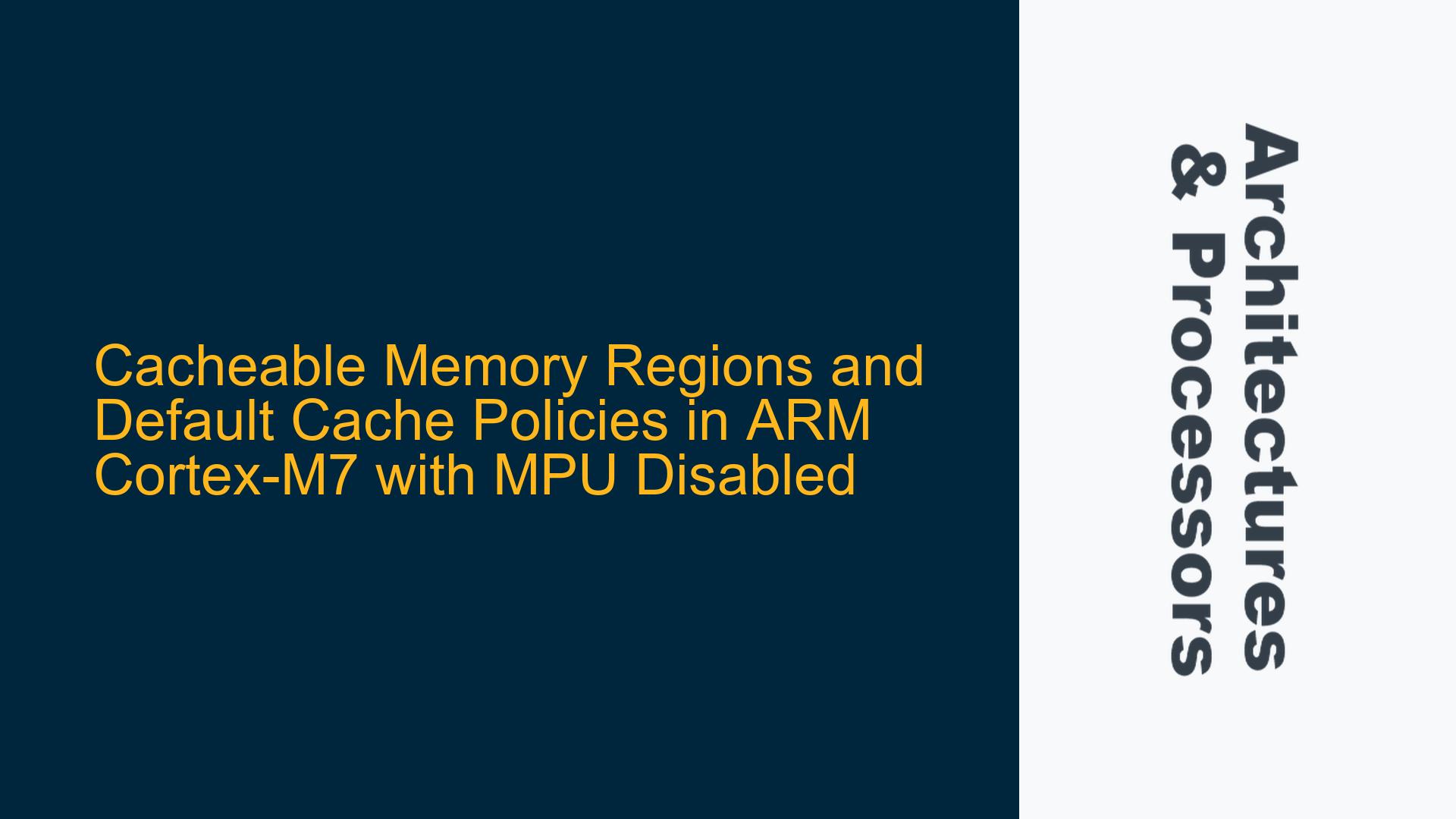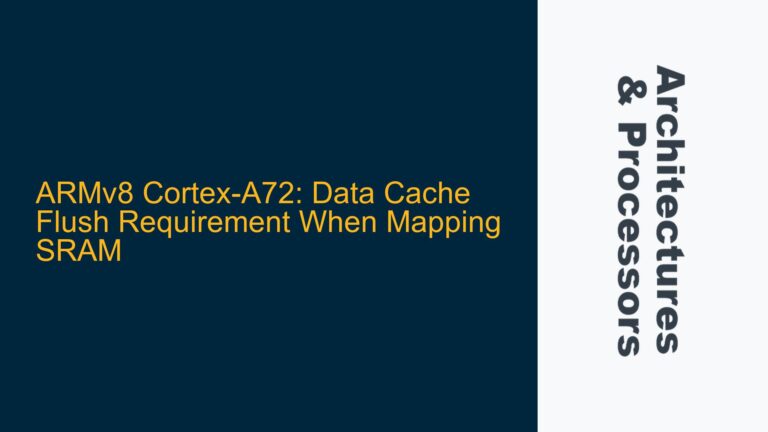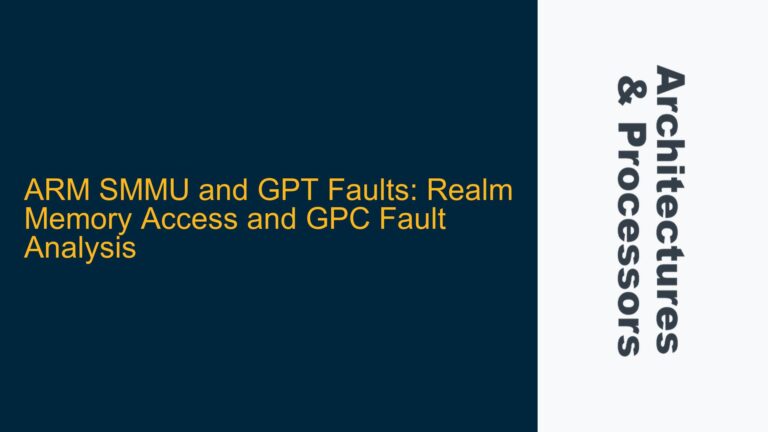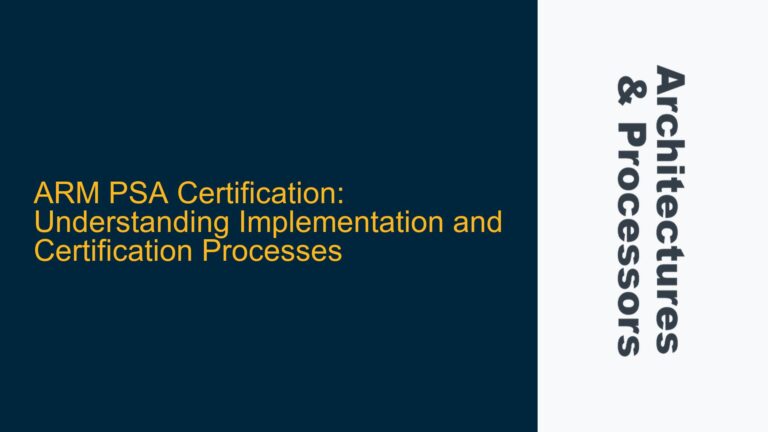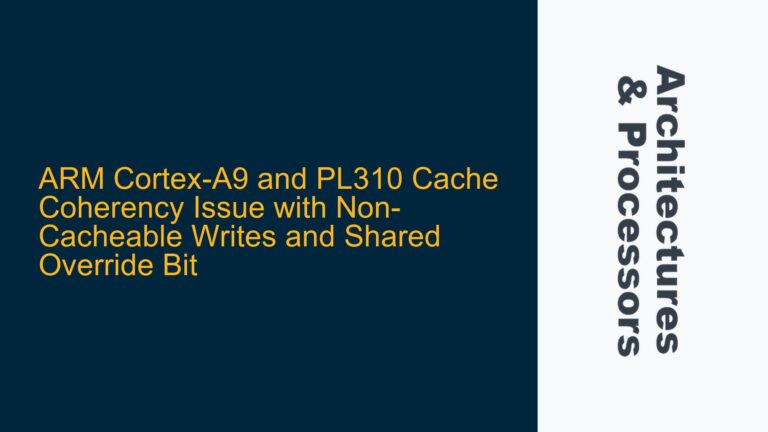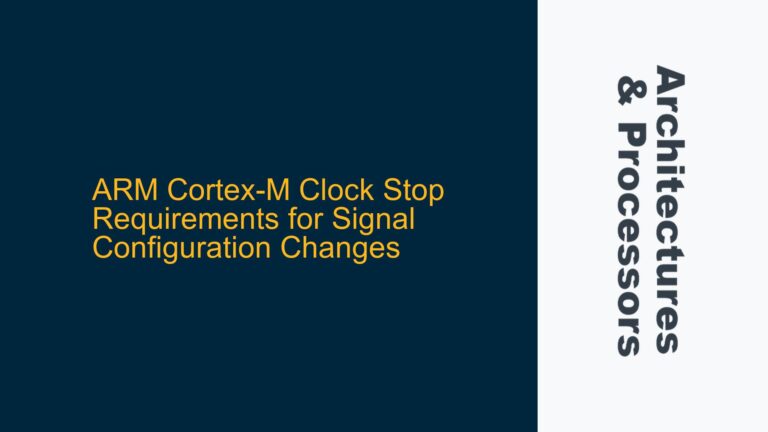Cacheable Memory Regions in ARM Cortex-M7 with MPU Disabled
When the Memory Protection Unit (MPU) is disabled in an ARM Cortex-M7 processor, the memory attributes for different regions are determined by the default system address map. The Cortex-M7 core relies on this default address map to define the cacheability and memory attributes of various address ranges. The default system address map is a critical aspect of the ARMv7-M architecture, and it is documented in the ARMv7-M Architecture Reference Manual (ARM DDI 0403E.e).
The ARM Cortex-M7 processor features both Data Cache (D-Cache) and Instruction Cache (I-Cache), which can significantly improve performance by reducing memory access latency. However, the behavior of these caches depends on the memory attributes assigned to specific address ranges. When the MPU is disabled, the system falls back to the default memory attributes defined in the system address map. These attributes determine whether a memory region is cacheable and, if so, what type of caching policy is applied.
The default system address map divides the memory space into several regions, each with predefined attributes. The cacheability of these regions is indicated in the "Cache" column of Table B3-1 in the ARMv7-M Architecture Reference Manual. The key regions and their cache attributes are as follows:
- 0x00000000 – 0x1FFFFFFF: This region is marked as Write-Through (WT). Write-Through caching means that every write operation updates both the cache and the main memory simultaneously. This ensures data consistency but may result in higher memory bandwidth usage.
- 0x20000000 – 0x3FFFFFFF: This region is marked as Write-Back, Write-Allocate (WBWA). Write-Back caching allows writes to be initially stored only in the cache, reducing memory bandwidth usage. The data is written back to main memory only when the cache line is evicted or explicitly flushed. Write-Allocate means that if a write misses the cache, a cache line is allocated to store the data.
- 0x60000000 – 0x7FFFFFFF: This region also uses the Write-Back, Write-Allocate (WBWA) policy, similar to the 0x20000000 – 0x3FFFFFFF region.
- 0x80000000 – 0x9FFFFFFF: This region is marked as Write-Through (WT), similar to the 0x00000000 – 0x1FFFFFFF region.
These default cache policies are applied when the MPU is disabled, and they dictate how the Cortex-M7 processor interacts with memory. Understanding these default attributes is crucial for system designers, as they influence performance, power consumption, and data consistency.
Default Cache Policies and Their Implications
The default cache policies in the ARM Cortex-M7 processor have significant implications for system behavior, particularly in terms of performance and data consistency. When the MPU is disabled, the system relies on the default memory attributes, which can lead to unexpected behavior if not properly understood.
The Write-Through (WT) policy used in the 0x00000000 – 0x1FFFFFFF and 0x80000000 – 0x9FFFFFFF regions ensures that every write operation updates both the cache and the main memory. This policy is beneficial in scenarios where data consistency is critical, as it guarantees that the main memory always reflects the latest data. However, the WT policy can result in higher memory bandwidth usage, which may impact performance in systems with high write traffic.
In contrast, the Write-Back, Write-Allocate (WBWA) policy used in the 0x20000000 – 0x3FFFFFFF and 0x60000000 – 0x7FFFFFFF regions allows writes to be initially stored only in the cache. This reduces memory bandwidth usage and can improve performance by minimizing the number of write operations to main memory. However, the WBWA policy introduces the risk of data inconsistency if the cache is not properly managed. For example, if a cache line containing modified data is evicted without being written back to main memory, the data in main memory will be stale.
The choice of cache policy also affects power consumption. The WT policy, with its higher memory bandwidth usage, may consume more power due to increased memory access activity. On the other hand, the WBWA policy can reduce power consumption by minimizing memory accesses, but it requires careful cache management to ensure data consistency.
In systems where the MPU is disabled, the default cache policies must be taken into account when designing the memory map and configuring the system. For example, placing frequently accessed data in WBWA regions can improve performance, while placing critical data in WT regions can ensure data consistency. However, these decisions must be made with a thorough understanding of the system requirements and the implications of each cache policy.
Managing Cache Behavior and Ensuring Data Consistency
To effectively manage cache behavior and ensure data consistency in an ARM Cortex-M7 system with the MPU disabled, developers must take several factors into account. These include understanding the default cache policies, implementing appropriate cache management techniques, and considering the impact of cache behavior on system performance and data integrity.
One of the key challenges in managing cache behavior is ensuring that data in the cache is consistent with data in main memory. This is particularly important in systems with shared memory or DMA (Direct Memory Access) operations, where multiple agents may access the same memory region. In such scenarios, cache coherency must be maintained to prevent data corruption.
To address this challenge, developers can use cache maintenance operations to explicitly manage the contents of the cache. For example, the Data Cache Clean (DCC) operation can be used to write back dirty cache lines to main memory, ensuring that the main memory contains the latest data. Similarly, the Data Cache Invalidate (DCI) operation can be used to discard stale data from the cache, ensuring that subsequent memory accesses fetch the latest data from main memory.
In systems with DMA, cache maintenance operations are essential to ensure that data transferred by the DMA controller is consistent with the data in the cache. For example, before initiating a DMA read operation, the cache should be cleaned to ensure that the DMA controller reads the latest data from main memory. Similarly, after a DMA write operation, the cache should be invalidated to ensure that the processor accesses the updated data from main memory.
Another important consideration is the impact of cache behavior on system performance. While the WBWA policy can improve performance by reducing memory bandwidth usage, it requires careful cache management to avoid performance degradation due to cache thrashing or excessive cache maintenance operations. Developers should monitor cache usage and adjust the memory map or cache configuration as needed to optimize performance.
In summary, managing cache behavior in an ARM Cortex-M7 system with the MPU disabled requires a thorough understanding of the default cache policies, careful implementation of cache management techniques, and consideration of the impact of cache behavior on system performance and data integrity. By taking these factors into account, developers can ensure that their systems operate efficiently and reliably, even without the MPU.
